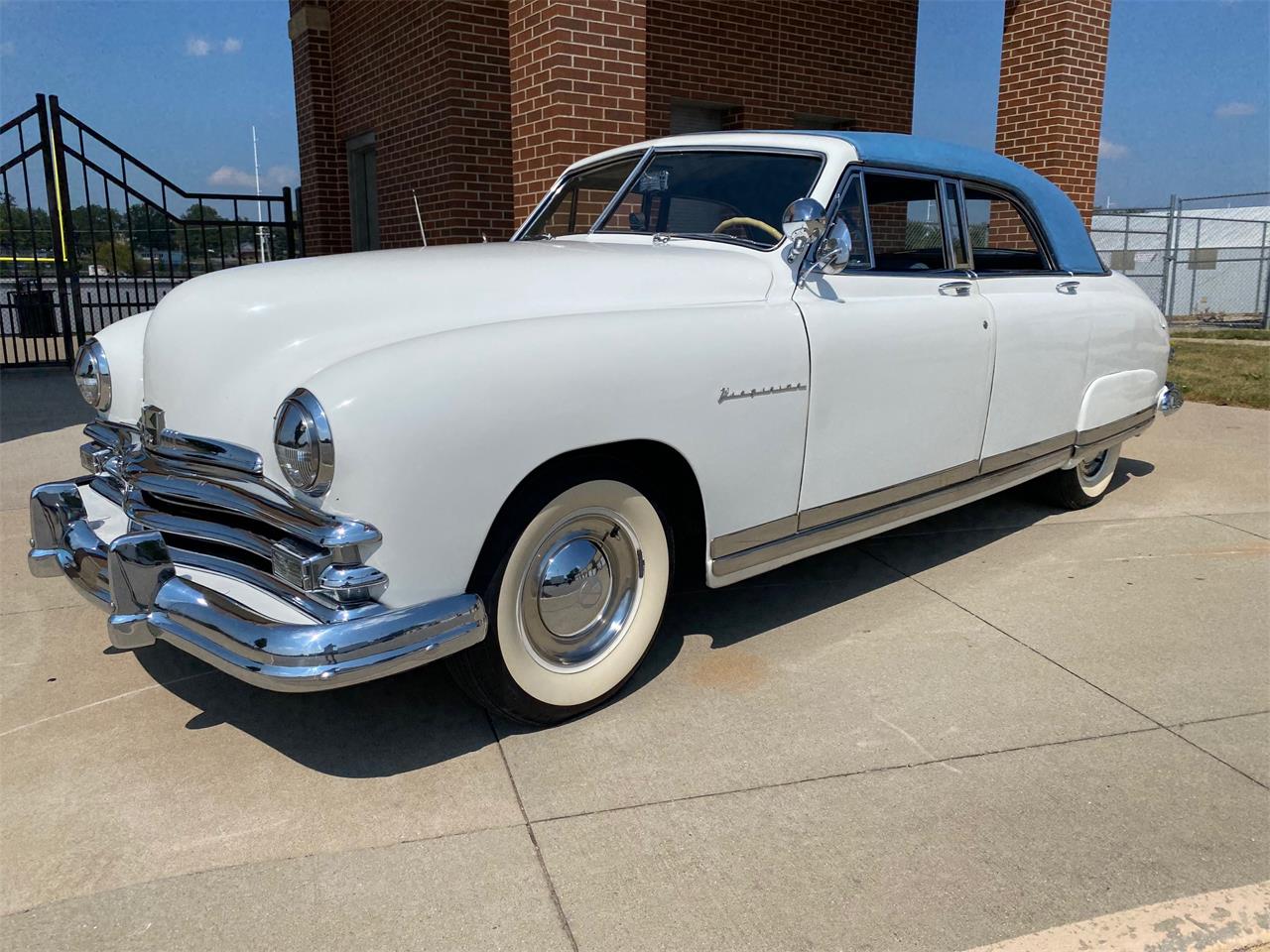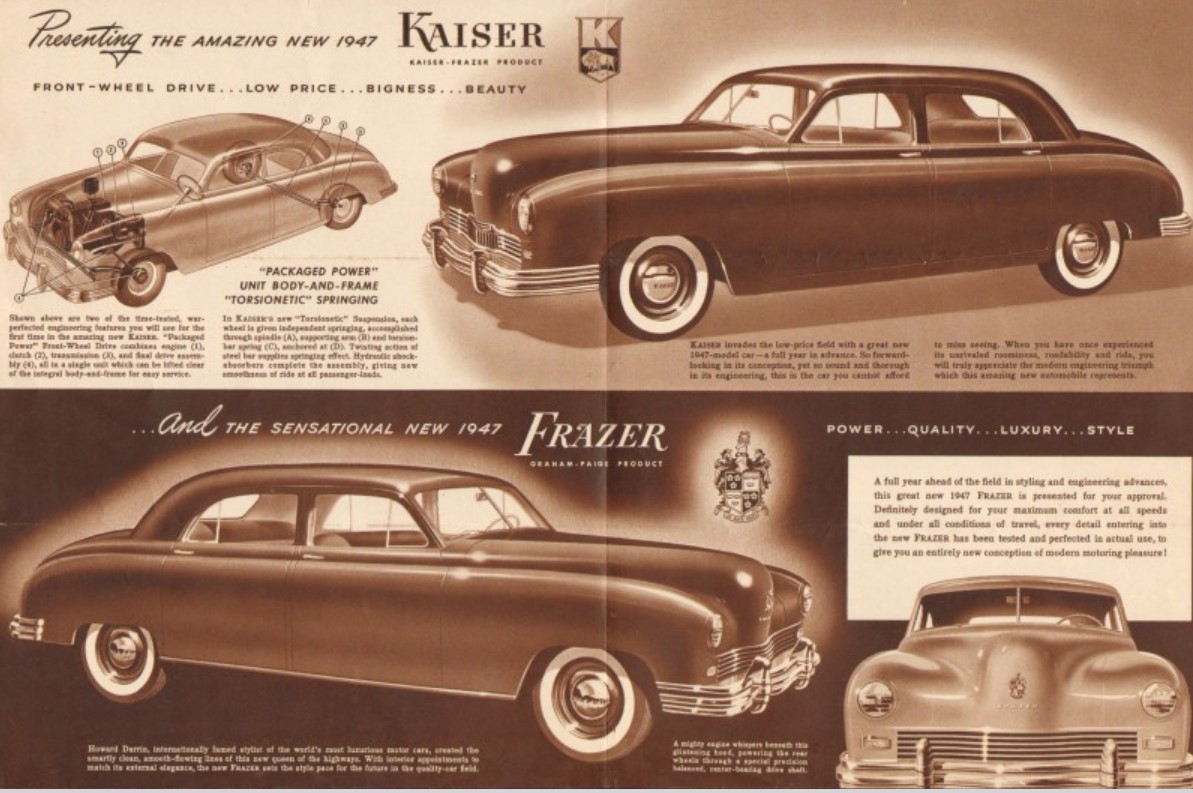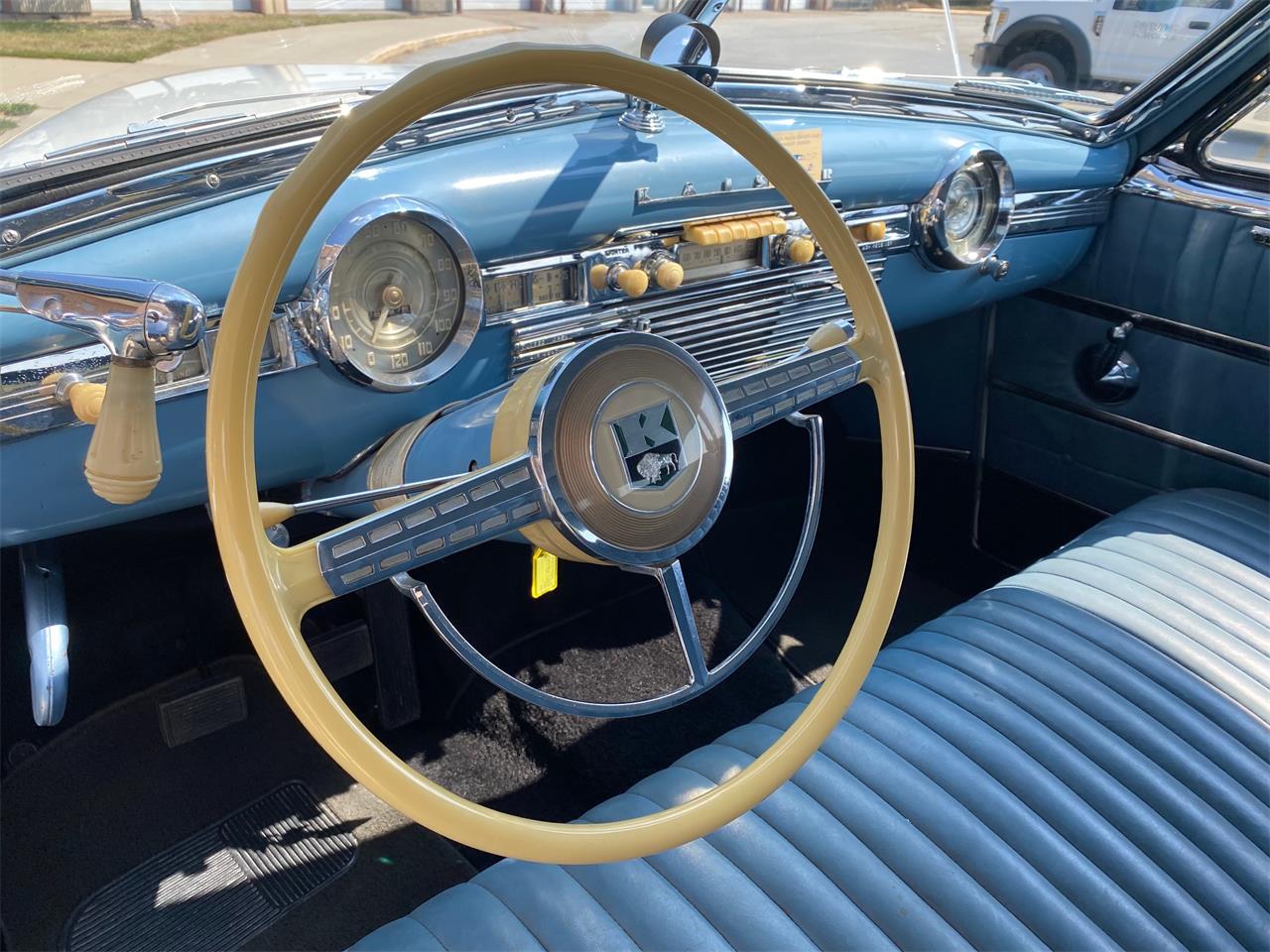Everyone wanted to be first by far with a postwar car, and Studebaker ended up being that brand. Every other manufacturer was anxious to unveil all-new vehicles, but a brand-new corporation was able to beat the others to the punch in 1947: Kaiser-Frazer Corporation was the upstart of the industry, and one of the company’s most majestic vehicles, a 1949 Kaiser Virginian, is our Pick of the Day. It’s listed for sale on ClassicCars.com by a dealership in Davenport, Iowa. (Click the link to view the listing)

Today he may be best known for founding a health care network, but industrialist Henry J. Kaiser teamed up with automotive executive Joseph W. Frazer to produce their automotive namesakes right after World War II. Howard “Dutch” Darrin styled the two brands, both four-door sedans featuring flush fenders and a 123.5-inch wheelbase. Initially, Kaisers were planned to be front-wheel-drive, but a number of complications made the company do an about-face and it ended up being a badge-engineered take of the more upmarket Frazer.

The Special was the only Kaiser available until the Custom debuted later in the model year. Every Kaiser (and Frazer) was powered by a 226cid L-head inline-six offering 100 horsepower, and all were hooked to a three-speed manual transmission. Customs were available with an optional intake and exhaust manifolds that upped horses by 12. Over 70,000 Kaisers were built in 1947, then another 92,000 for 1948. These were fine numbers for a new brand in a market full of car-hungry consumers, and Kaiser-Frazer’s balance sheet was strong as well. It wouldn’t last much longer.

For 1949, Kaisers (and Frazers) were given a nice restyle to keep them contemporary. However, competition from other Detroit manufacturers began to reveal the company’s weaknesses, which included an outclassed engine and the lack of an automatic transmission. Additionally, the issue of style came to the forefront when Oldsmobile, Buick, and Cadillac introduced proper two-door hardtop convertibles. Many manufacturers scrambled to create special-edition models to make up for the lack of a hardtop body style, but Kaiser had already been faking it with the Virginian. Though posing as a four-door hardtop, the Virginian was simply a nicely trimmed four-door sedan with a pair of thin chrome B-pillars with glass panes.

Characterized as a “the blueblood of all cars,” the Virginian combined the “sleek low lines of a convertible with the security of a steel roof, nylon-covered. And the custom-styled interior of a town car.” A harmonious blend of styling, color, and fabrics characterized the Virginian and set the tone for Kaisers to come, but the Virginian’s price was veering on Cadillac territory, a luxury brand powered by a modern OHV V8. This may explain why an estimated 946 Virginians were built between 1949-50.

This 1949 Kaiser Virginian has been garage-kept its whole existence and was in the hands of its previous owner for 60 years, having been restored in 1981. The engine has been rebuilt and, of course, it features a three-speed manual with optional overdrive. The interior features new upholstery. “Engine compartment is tidy,” says the seller.

This gray and blue hues look gorgeous, and the attempt to make a hardtop sedan is almost quaint yet comes off as quite striking. The Virginian is quite possibly a precursor to the Kaiser Dragon, another nicely trimmed model that would appear several years later, though the lack of V8 and hardtop style was the death knell for the company. However, for late 1940s high style, this $19,900 1949 Kaiser Virginian will crown you the Southern Belle of the road no matter your gender.
Click here for this ClassicCars.com of the Day.






What a fantastic example of this piece of automotive history, plus a lot of bang for the buck. It is a shame that being such a nice, rare car to restore has a low $$$$$ value. The rule of rare and very nice does not mean worth a lot money. We could not even think of buying, building this car for 20K. A great buy for any car guy!